Green Bay Packers Tough Decisions: Davante Adams
GREEN BAY, Wis. – A key offseason is here for the Green Bay Packers. The decisions that general manager Brian Gutekunst makes over the next few weeks to navigate through a $43 million hole in the salary cap will determine whether the team will contend for a Super Bowl in 2022.
This series of stories highlights the critical decisions that lie ahead. The seventh and final part focuses on receiver Davante Adams.
WR Davante Adams: 2022 Status – Free Agent
There’s already agreement between the Packers and Adams when it comes to his upcoming free-agent status.
Neither side wants to deal with the franchise tag.
“I’m not sure,” Adams said on Jan. 5 when asked how he’d handle being tagged. “I’m not sure how to answer that safely right now. So, we’ll just cross that bridge when we get to it. I’ll just say that. I like to be professional on here.”
Using it on Adams isn’t Gutekunst’s preference, either.
“It’s kind of a last-option type of thing,” Gutekunst said during a conversation with Packers beat writers inside the Lombardi Board Room on Wednesday. “And then even if we do have to use it, it’s more of a bridge to hopefully an extension down the road.”
Gutekunst’s history matches his words. From 2011 through 2021, the Packers are the only team in the league to not use the franchise tag. In 2010, then-general manager Ted Thompson placed the tag on defensive tackle Ryan Pickett as a way to buy time to sign him to a long-term deal. So long as Aaron Rodgers returns, that would be the team’s intention if it tags Adams. In 2008, Thompson tagged defensive tackle Corey Williams, then traded him to Cleveland. If Rodgers decides not to return, that could be the intention if it tags Adams.
Either way, tagging Adams seems like a certainty unless the two sides can agree to a long-term deal before the franchise window closes on March 8.
“We try to be respectful,” Gutekunst said. “I had a very good conversation with Tae before he left about all that stuff. He’s a unique player, unique person, and we’d certainly like to make him a long-term contract offer that works for both sides. We’re hopeful we don’t have to use it.”
Adams is a logical exception to the Packers’ rule. Among receivers since the start of the 2016 season, he is No. 1 in the NFL with 581 receptions (31 more than DeAndre Hopkins), No. 1 with 7,192 yards (144 more than Julio Jones) and No. 1 with 69 touchdowns (nine more than Mike Evans).
For the third time in four years, Adams had more than 110 receptions and 10 touchdowns. In 2021, he set franchise records with 123 receptions for 1,553 yards (12.6 average). Eight of his 11 touchdowns came during the final seven games, when the offense really took off. According to Pro Football Focus, 91 receivers were targeted at least 49 times. Adams ranked 13th in catch rate, third in yards per route (2.92), 18th in drop rate (four drops; 3.1 percent) and 15th in passer rating (114.5).
“This is one of the first situations that I’ve gone through like this with a premier player like Davante,” Gutekunst said. “He had a lot [of pressure] going into this season with the contract thing, and his focus and the way he prepared and the way he played and put himself at risk each and every week, the respect for him that I have just grew even more. To see him go out there and compete, that never affected him. And that’s not true of all players. And so I give him a lot of credit for that. He’s a great player, we really want him to be here, and I’m very hopeful that he will be.”
Other than hurt feelings, the major reason to avoid using the franchise tag is the cost. Tagging Adams would drop another $20 million hammer on the team’s salary cap. Hammering out an extension presumably would result in a much lower Year 1 price.
The downside of an extension with Adams is age. He’ll turn 30 on Christmas Eve. Contracts are supposed to be for future projection instead of past production.
Three contracts have set the standard at the position. In terms of average pay, Arizona’s Hopkins’ two-year contract is worth $27.25 million. In terms of guaranteed money, Tennessee’s Jones’ three-year contract is worth $66 million and includes $64 million guaranteed. Jones is a distant second in average pay at $22 million. In terms of total dollars, Dallas’ Amari Cooper’s five-year contract is worth $100 million.
Adams at age 29 or 30 should remain an indomitable force. But how about when he’s 31 or 32?
It’s a question the Packers have dug into.
“Obviously, we do a lot of studies on those metrics and different things,” Gutekunst said. “One of the things we look at specifically for guys who are Hall of Fame-caliber players, I think there’s a lot of production into their 30s. But, at the same time, it’s like anything, there’s risk either way.”
Gutekunst continued with a mic-drop line.
“There’s a lot of risk if we don’t have Davante Adams and what that does to our football team, as well.”
More Tough Decisions
OLBs Za’Darius Smith and Preston Smith
S Adrian Amos, RT Billy Turner, DT Dean Lowry, WR Randall Cobb
Grading the Receivers
Davante Adams ($16.78 million cap charge; ranking No. 3 among WRs)
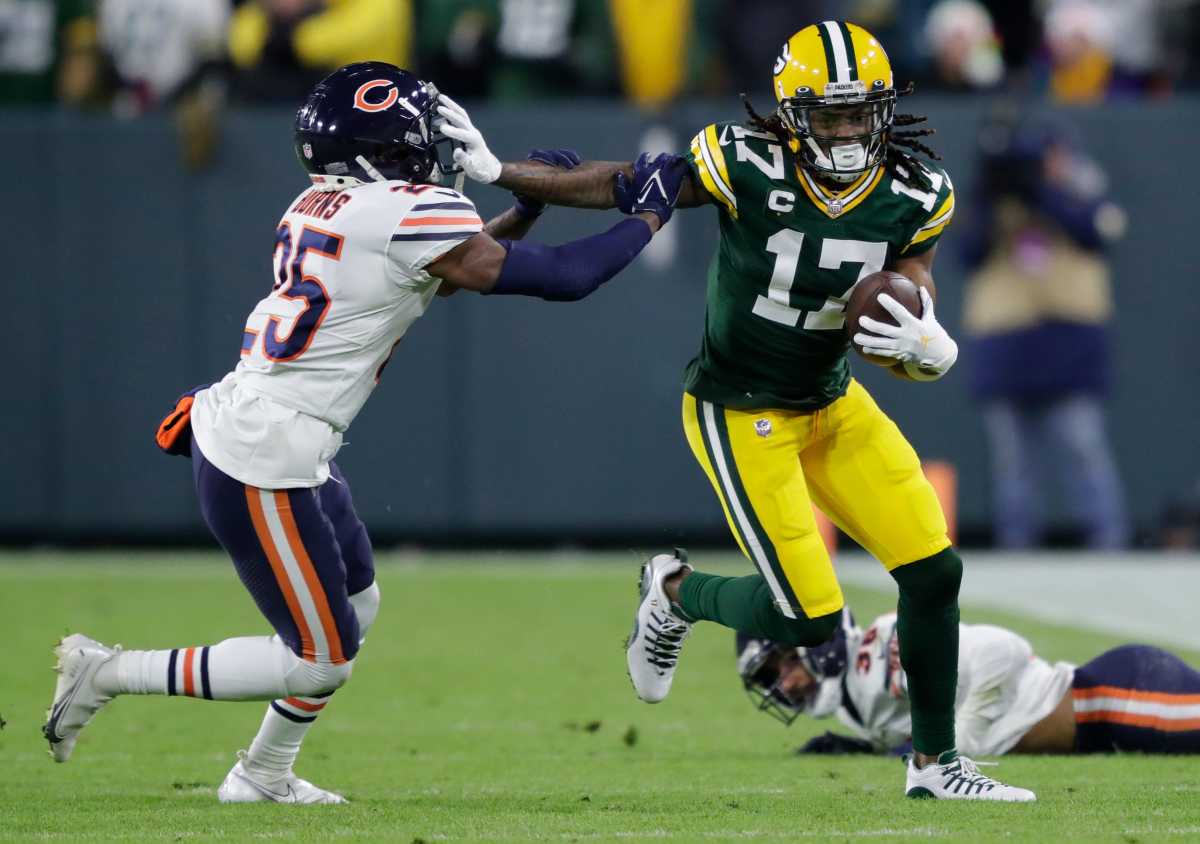
Adams is a face-of-the-franchise type of player. In a perfect world, you want your absolute best players to dominate with production, lead with presence and generally do everything on and off the field the right way. That’s Adams.
Adams set franchise records with 123 receptions for 1,553 yards (12.6 average). Eight of his 11 touchdowns came during the final seven games, when the offense really took off. Everyone in the stadium knew where Aaron Rodgers wanted to fire the football and it usually didn’t matter. Rodgers can make any receiver look good, it’s true, but Adams can make any quarterback look good. When you combine a great quarterback and a great receiver with great chemistry, you get what you saw week after week after week.
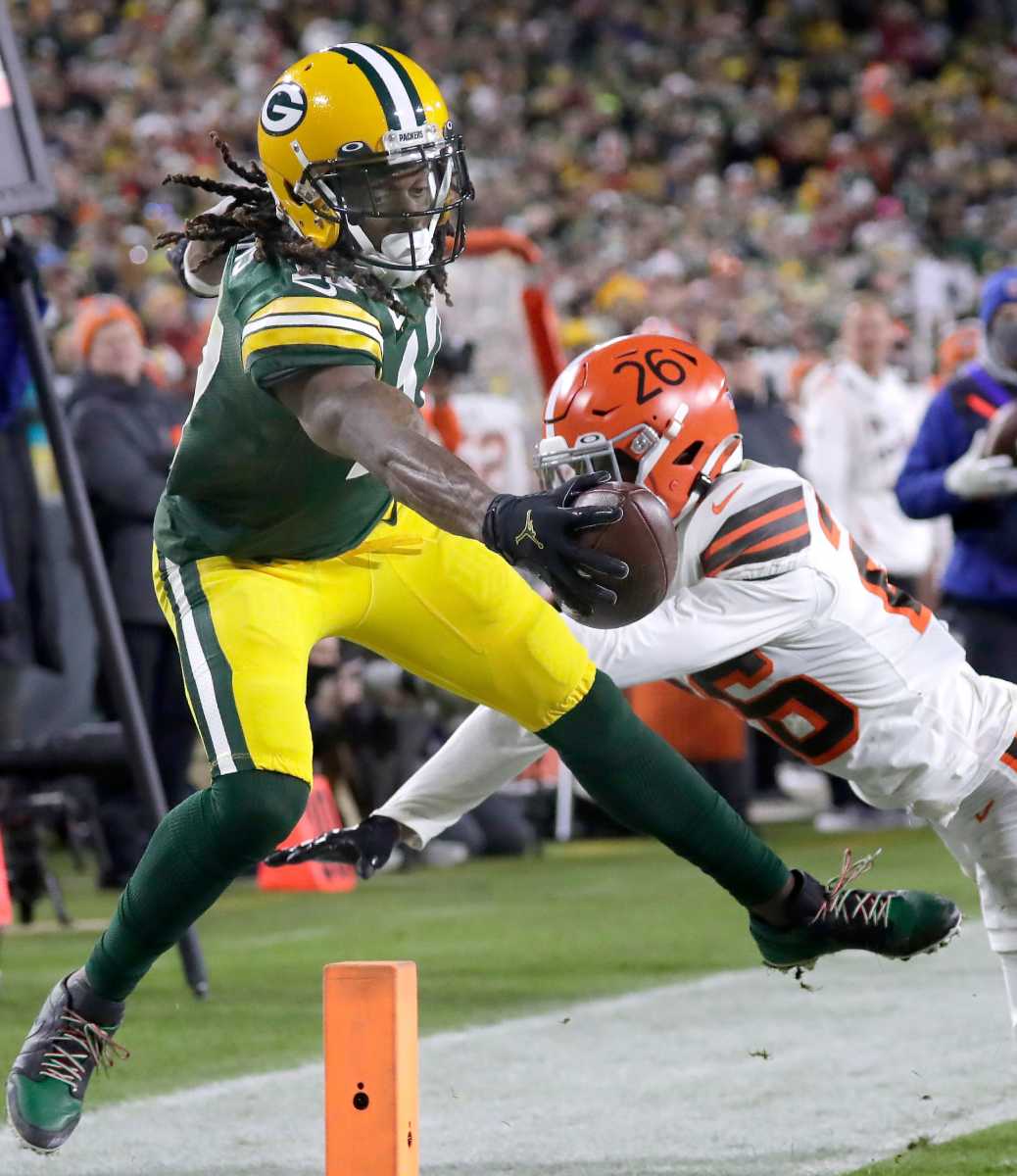
According to Pro Football Focus, 91 receivers were targeted at least 49 times. Adams ranked 13th in catch rate, third in yards per route (2.92), 18th in drop rate (four drops; 3.1 percent) and 15th in passer rating (114.5). Adams wanted to be more of a force after the catch, so he forced 13 missed tackles compared to only four in 2020 and 15 the previous three seasons combined. He also tied for fifth with 12 receptions on passes thrown 20-plus yards downfield.
Adams is scheduled to be a free agent. If he hits the market, he’ll be the No. 1 available player. Arizona’s De’Andre Hopkins is the highest paid receiver with an average salary of $27.25 million. It’s an outlier contract. Tennessee’s Julio Jones is a distant second with a $22 million average, and only Hopkins, Jones, the Chargers’ Keenan Allen and Dallas’ Amari Cooper average $20 million per season. Moreover, Adams will turn 30 on Christmas Eve. Still, it is the priceless connection between Rodgers and the indomitable Adams that makes the offense go.
Grade: A-plus.
Randall Cobb ($2.69 million cap charge; ranking No. 57 among WRs)
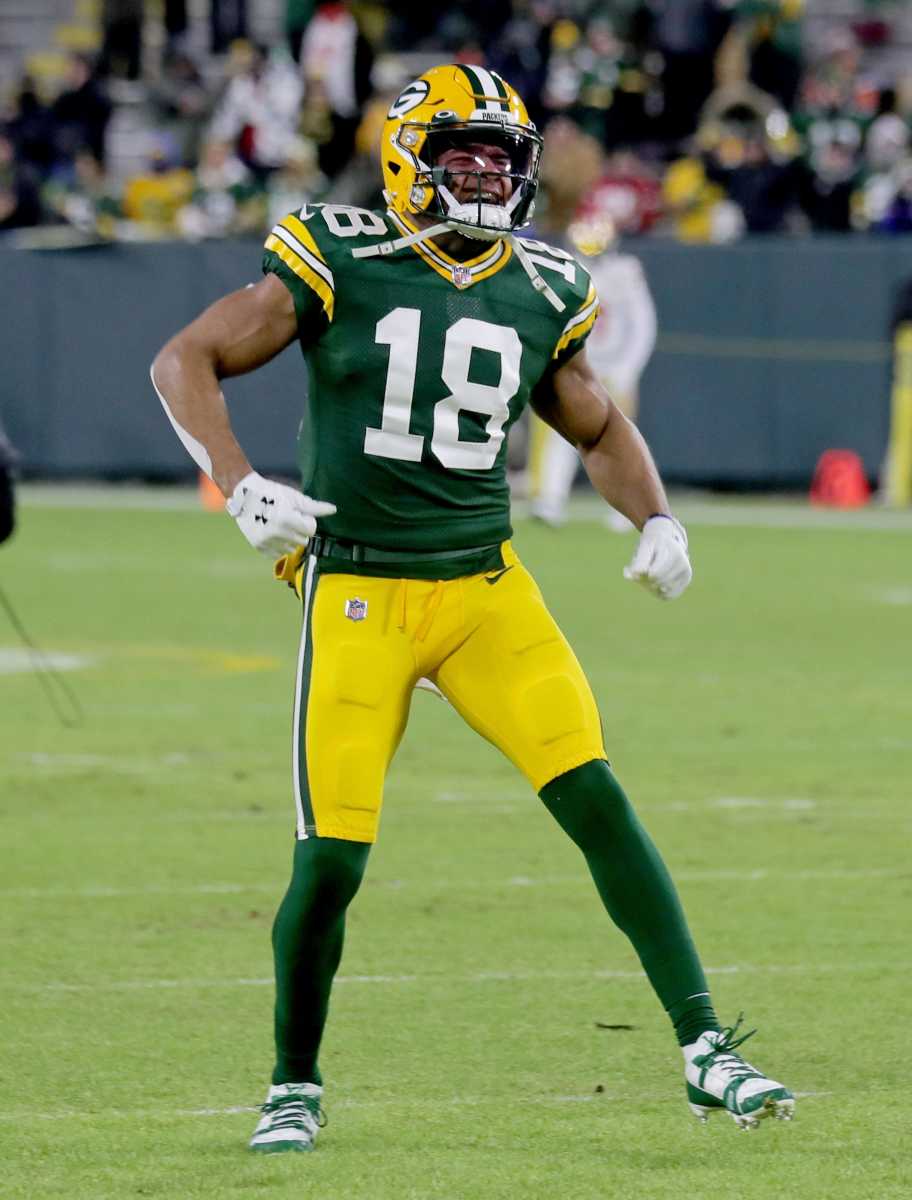
Cobb was brought back at the urging of Aaron Rodgers. He caught 28-of-39 targets (71.8 percent) for 375 yards (13.4 average) and five touchdowns.
In the grand scheme of things, he wasn’t worth the money – and certainly won’t be worth the money next year, when his cap number soars to $9.5 million. But he did deliver when needed and showed he can still play. He had two-touchdown games against Pittsburgh and Arizona, and he was a huge part of the offense in a key win over the Rams before suffering a core-muscle injury that sidelined him for the final six games. He was as fired up as anyone at Lambeau Field when he returned for the playoff game, then inexplicably wasn’t targeted by Rodgers until the final minutes.
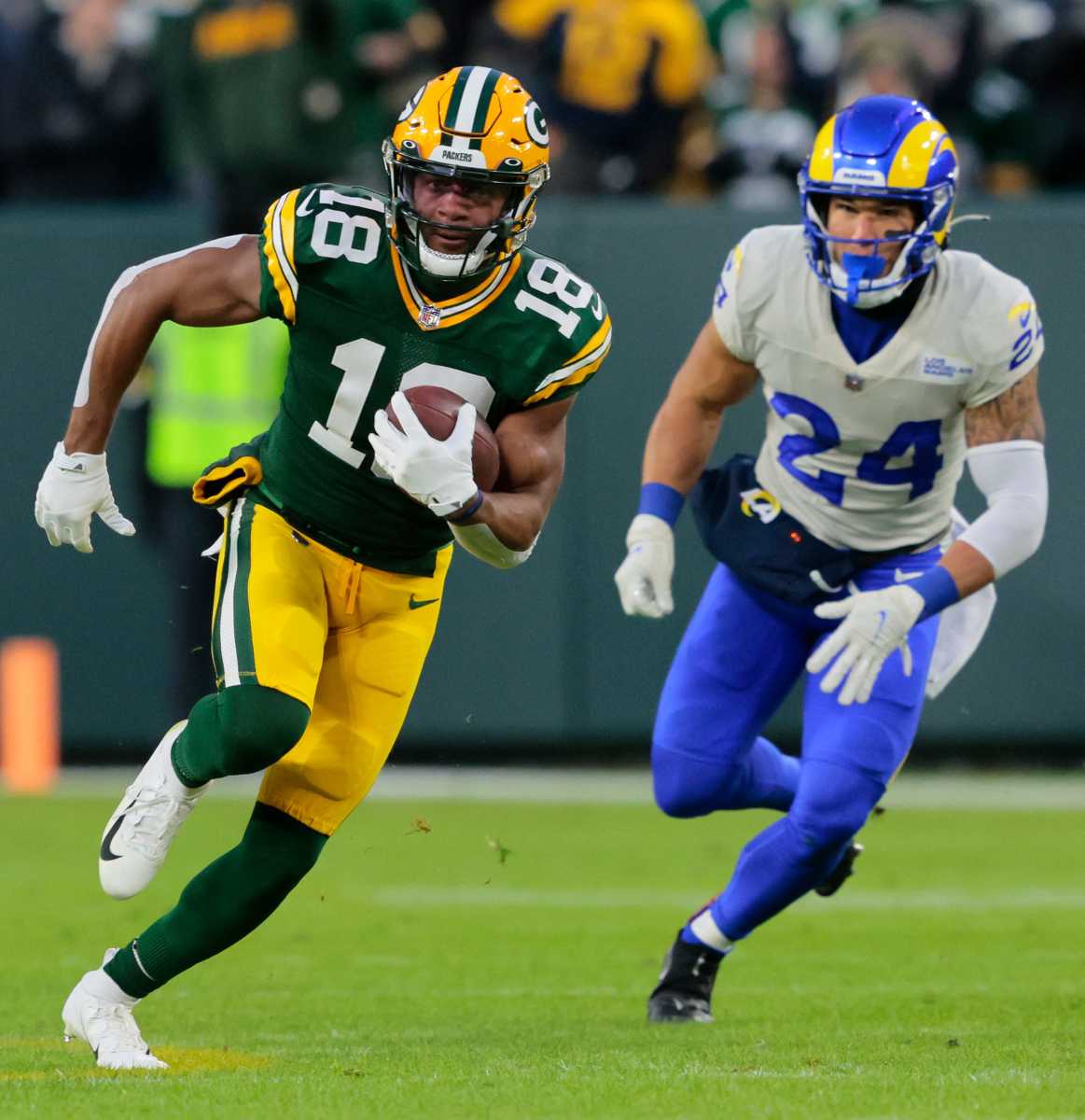
Cobb had zero drops, trailed only Adams in yards per pass route (1.49) and had the best passer rating when targeted (144.2). He’ll turn 32 during training camp. The Packers can save almost $6.75 million by moving on and giving Amari Rodgers a shot in the slot.
Grade: C.
Marquez Valdes-Scantling ($2.24 million cap charge; ranking No. 66 among WRs)
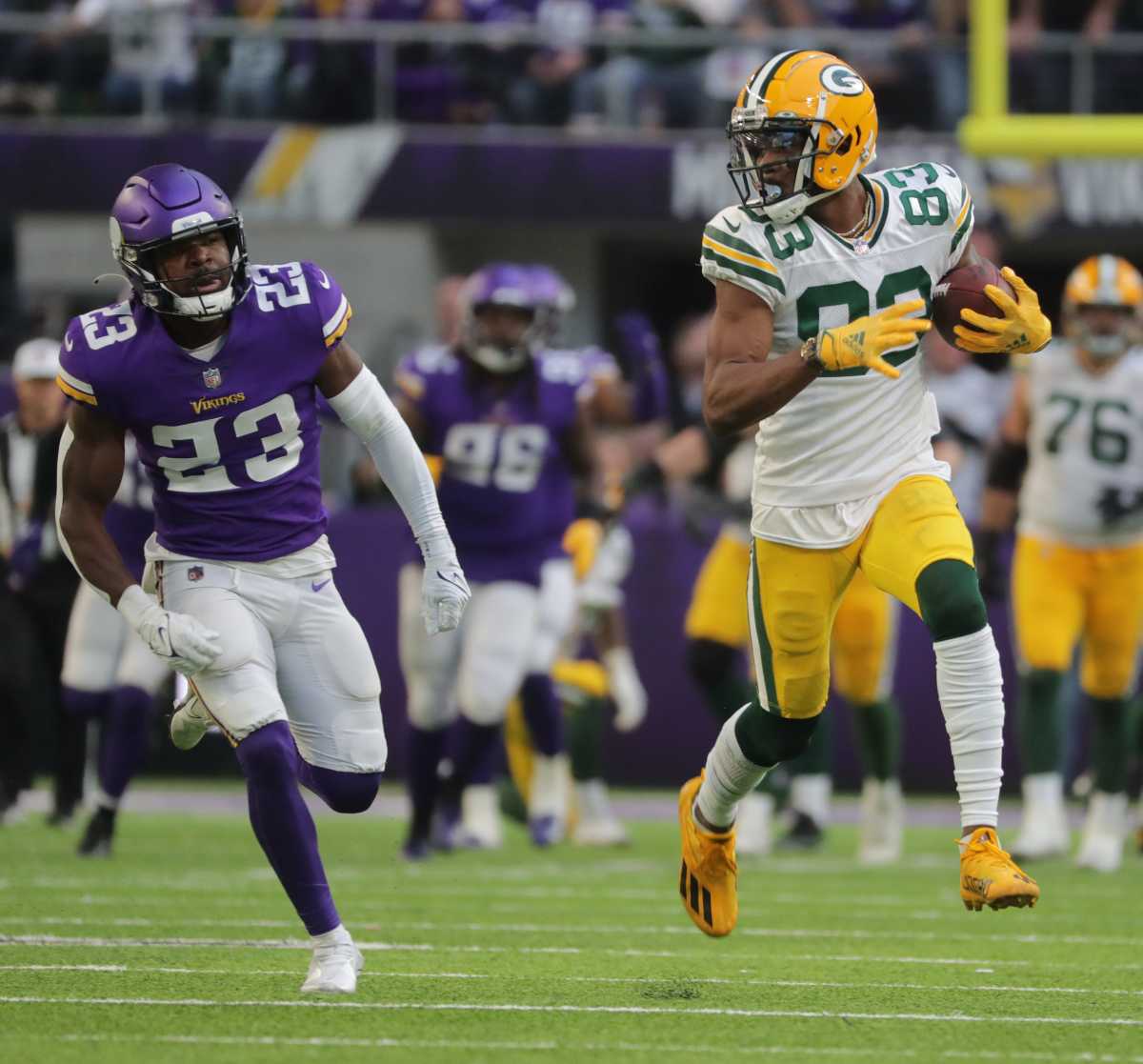
As a fifth-round pick in 2018 who hit certain playing-time requirements, Valdes-Scantling got a nice bump in salary (to $2.183 million) as part of the NFL’s proven-performance escalator. After leading the NFL with a 20.9-yard average in 2020 and a big-time training camp this summer, expectations were high entering the season. Limited to 11 games (seven starts) by injuries, he caught 26-of-55 passes (47.3 percent) for 430 yards (16.5 average) and three touchdowns. According to PFF, he had zero drops but also didn’t break any tackles.
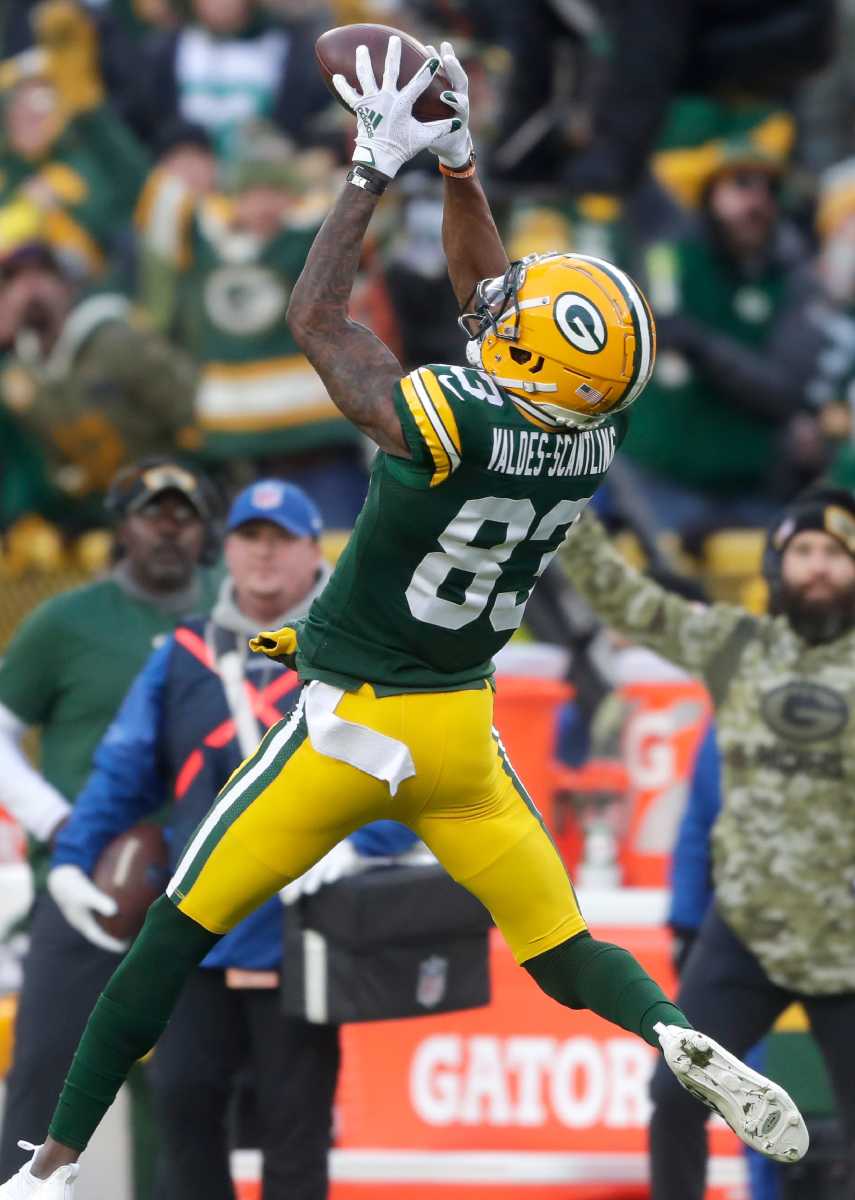
With elite size and speed, Valdes-Scantling’s niche is as a deep threat. On passes thrown 20-plus yards downfield, he caught only 6-of-22 (27.3 percent) with one touchdown this season compared to 9-of-30 (30.0 percent) and five touchdowns last season, according to PFF. Aaron Rodgers never quite got dialed in to MVS’s game-breaking speed.
Valdes-Scantling faces an interesting free agency. He is a proven deep threat. He cut his drops from seven to zero. And, until missing six games this season (plus the playoff game), he had never missed a game in his career. But it’s a what-have-you-done-for-me-lately league. Finishing 83rd among receivers in yards isn't the ideal way in which to hit the open market.
Grade: C-minus.
Amari Rodgers ($890,891 cap charge; ranking No. 127 among WRs)
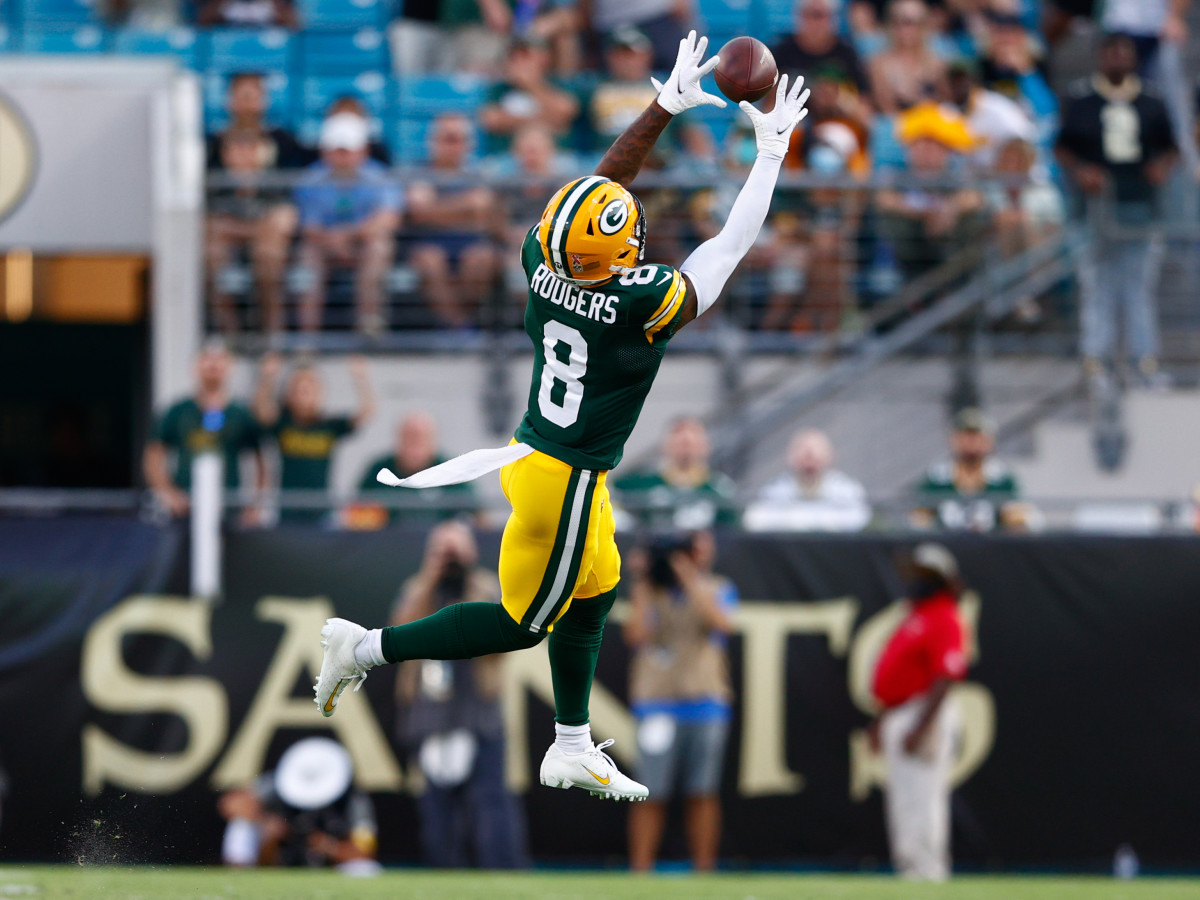
A third-round pick out of Clemson, Rodgers came with some impressive credentials. He was ultra-productive at a national powerhouse, Clemson. His father is Tee Martin, the Tennessee football legend and Ravens receivers coach. He was mentored as a kid by Cobb. His rookie season, though, was not very good.
On offense, he was shoved to the back burner because of the return of Cobb. He caught 4-of-8 passes for 45 yards (11.3 average) with zero touchdowns and one drop. On special teams, he averaged 8.3 yards per punt return and 18.1 yards per kickoff return. On punt returns, simply catching the ball was an adventure at times, though he got better in that phase at the end of the season and wound up with seven returns of 15-plus yards. A make-or-break offseason could await.
Grade: D-minus.
Allen Lazard ($850,000 cap charge; ranking No. 138 among WRs)
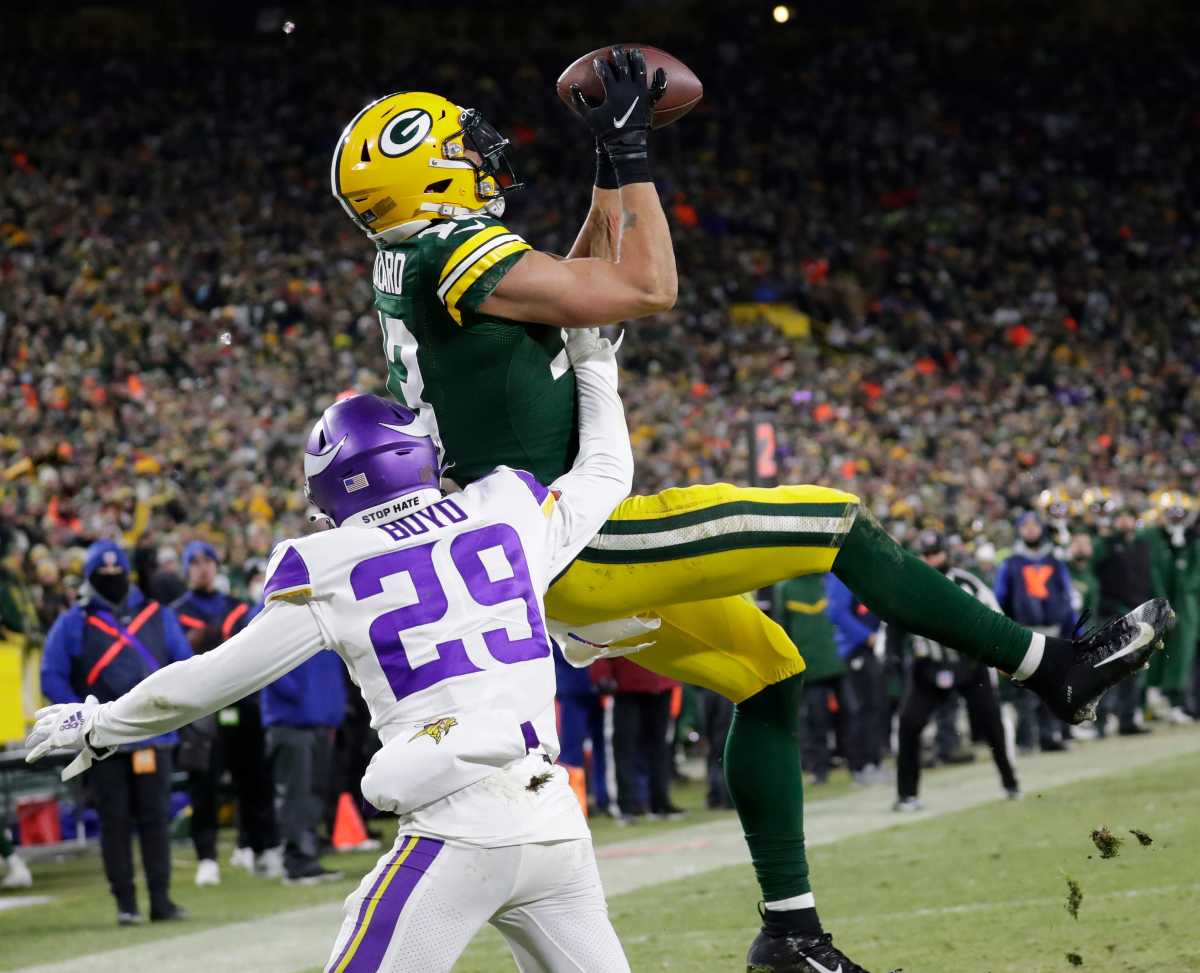
Lazard is coming off the best season of his career. He caught 40-of-60 passes (66.7 percent) for 513 yards (12.8 average) and eight touchdowns. The catches, yards and touchdowns all set career highs. He finished the season with a flourish. In the first 11 games, he had only one game of more than three catches. In the final six games, he had five-plus receptions for 70-plus yards three times. His five touchdown catches over the final five games were surpassed league-wide only by Adams.
Lazard is renowned for doing the dirty work. Defenders are so wary of his blocking that they can get blown by in the deep game. He caught 5-of-10 passes thrown 20-plus yards downfield, according to PFF. That was only one less reception than Valdes-Scantling while getting a dozen fewer deep targets. He did have three drops, giving him a drop rate of 7.0 percent that was the worst among the Big 4 receivers but not all that far off the league median of 5.4 percent.
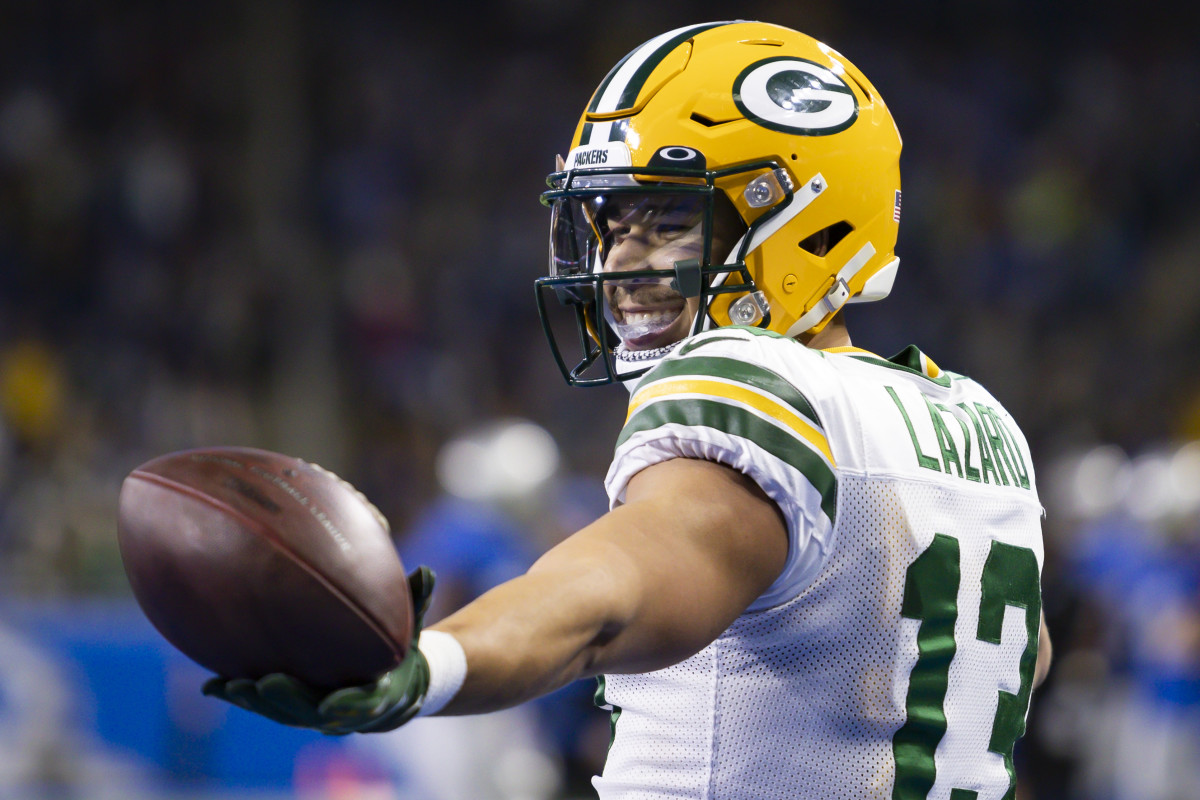
Lazard will be a restricted free agent. He’s been good enough that he could attract interest from other teams. To limit that interest, the Packers could give him the second-round tender, which will be worth almost $4 million. That’s a big chunk of change given the team’s cap problems. The team could do what it did with tight end Robert Tonyan last year, when it gave him that second-round tender, then restructured it with void years to provide cap relief.
Grade: B-plus.
Malik Taylor ($780,000 cap charge; ranking No. 164 among WRs)
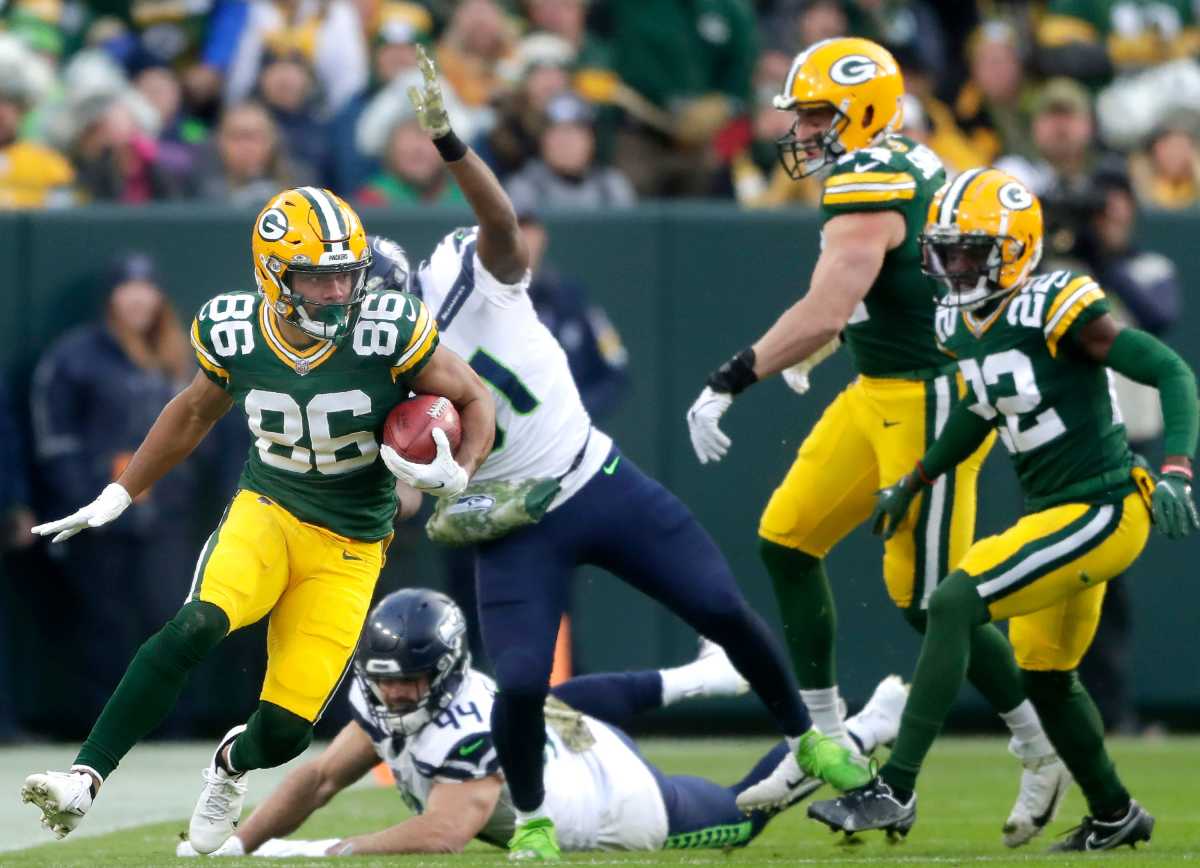
Taylor caught two passes for 14 yards at the end of the 38-3 loss to New Orleans in Week 1. He never saw the ball the rest of the season on offense. Heck, he barely saw the field the rest of the season. In 10 games, he played 32 snaps on offense – 15 in Week 1 and never more than five thereafter. About his only noteworthy play was fumbling a kickoff out of bounds at the 5 in Week 14 against Chicago.
Grade: F.
Equanimeous St. Brown ($613,889 cap charge; ranking No. 191 among WRs)
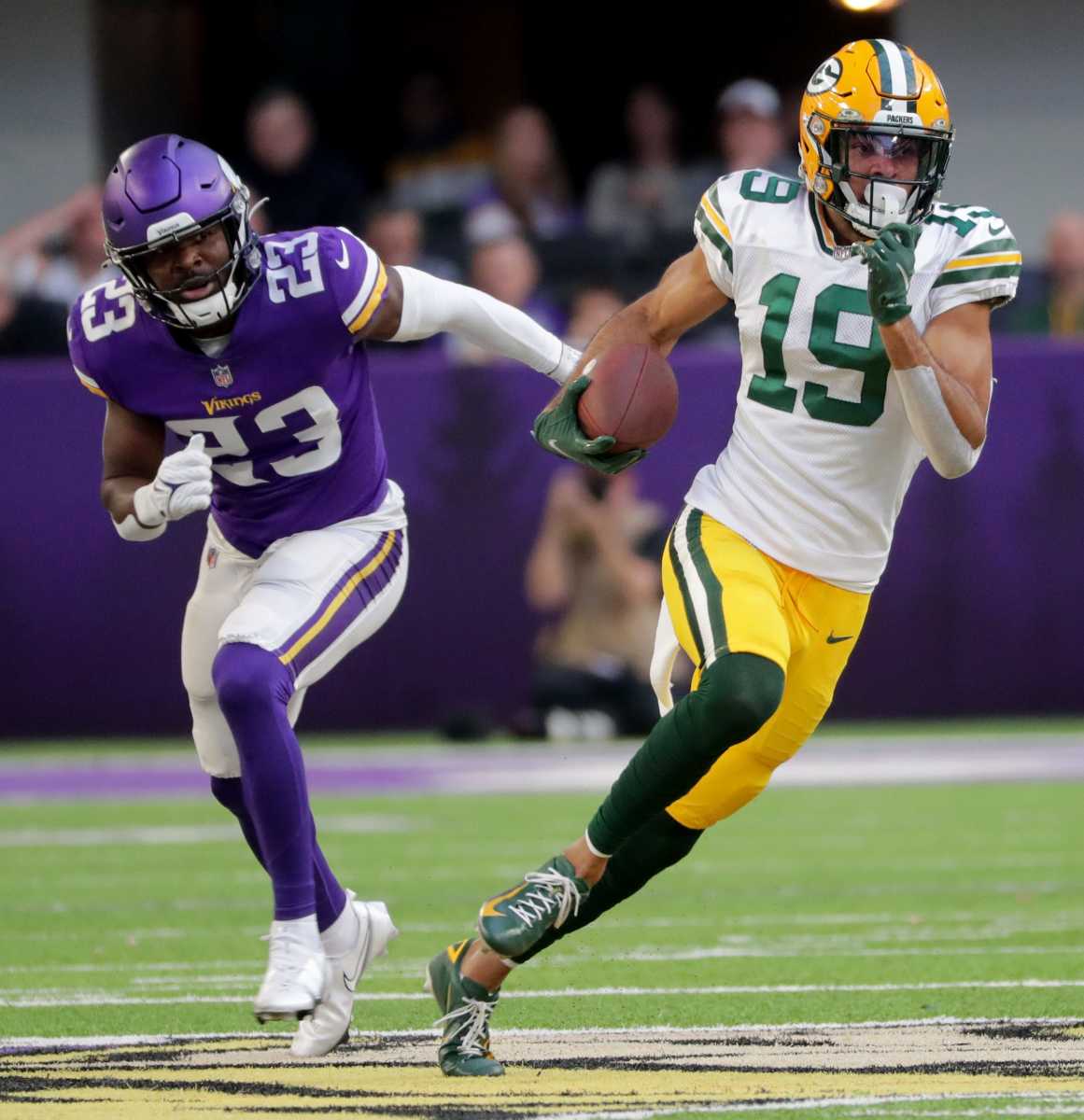
A sixth-round pick in 2018, St. Brown failed to make the roster but wound up playing in 13 games. He caught 9-of-17 passes (52.9 percent) for 98 yards and finished third on the team with seven tackles on special teams. Aaron Rodgers praised St. Brown for his attitude and performance throughout the season but it wasn’t enough to get the ball thrown his direction. He finished last on the team with 0.66 yards per pass route, according to PFF. With that, St. Brown will join a few of his teammates in free agency. On one hand, the Packers might want him back for some stability. On the other hand, he might want a fresh start after not getting many chances following a rookie season of 21 receptions.
Grade: C-minus.
Juwann Winfree ($173,333 cap charge; ranking No. 252 among WRs)
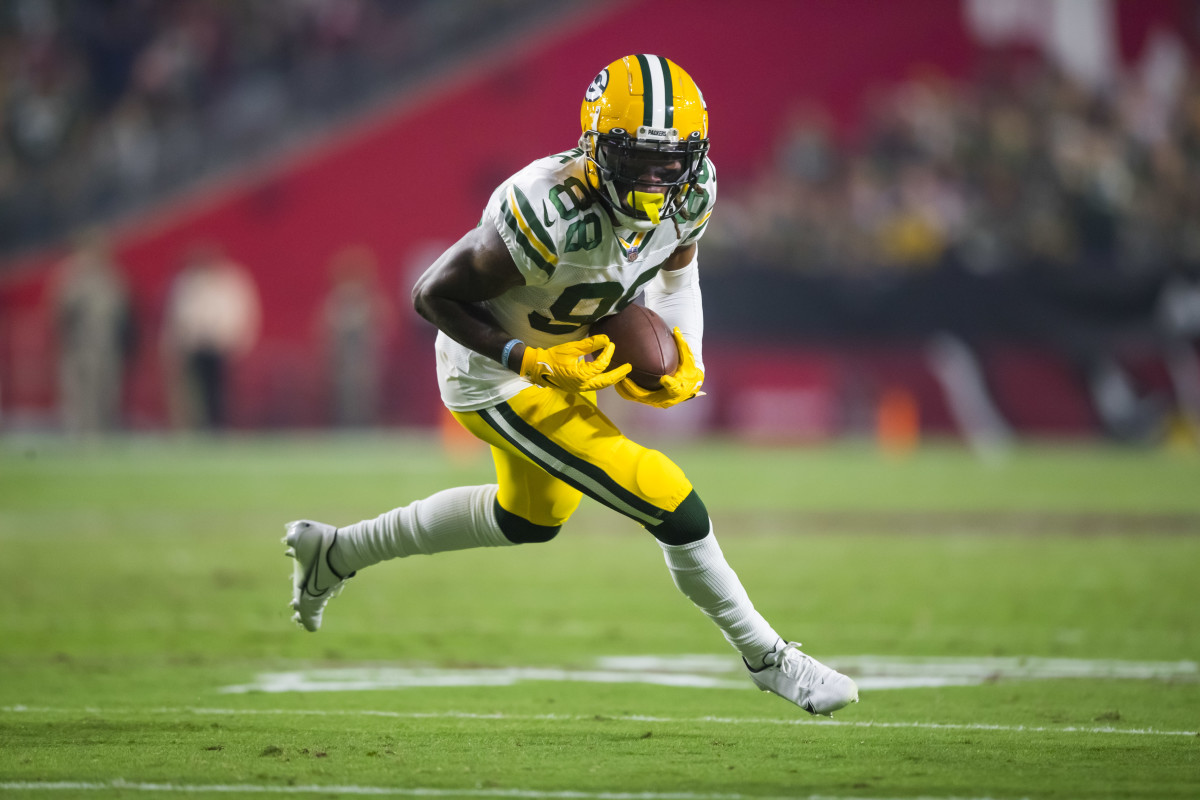
A sixth-round pick by Denver in 2019, Winfree turned heads with a string of excellent practices while the veterans stayed away from the offseason workouts. He caught the first eight passes of his career, which he turned into 58 yards, but fumbled twice. Those were the only fumbles by a Packers receiver on offense the entire season. He also had one of the nine drops charged to Green Bay’s receivers.
Grade: F.
